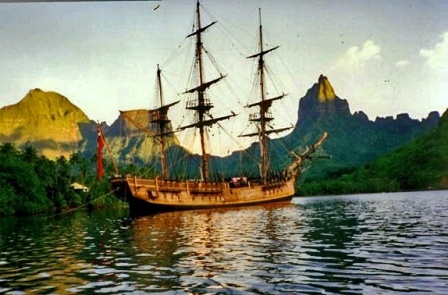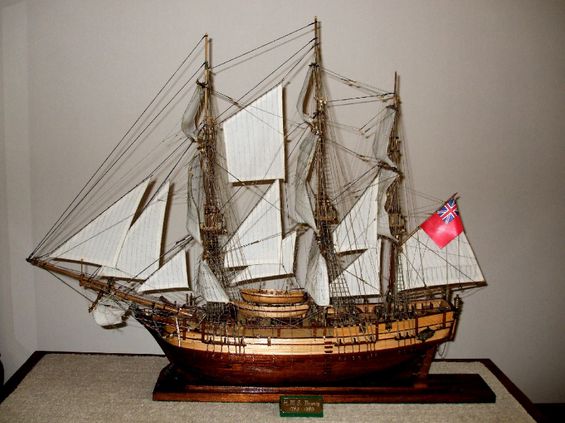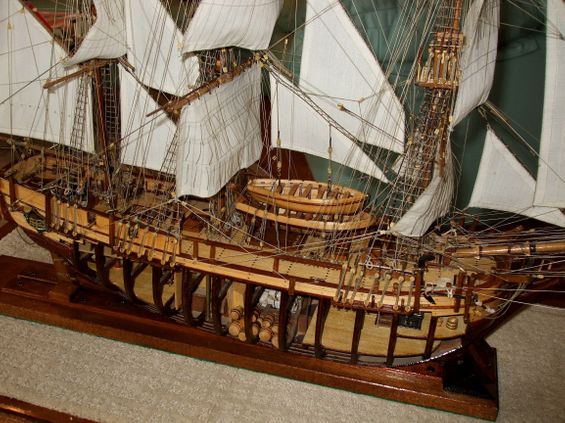Classic Ship Models 6
A PROFILE
Bounty anchored off Moorea
HMAV"BOUNTY" 1784
Historical Facts
His Majesty's Armed Vessel "Bounty" began her career as the collier "Bethia" built at the Blaydes shipyard near Hull, UK. Later she was purchased by the Royal Navy for 2,600 pounds on May 26th 1787, re-fitted and renamed "Bounty". Following the mutiny, she was burned and scuttled by the mutineers off Pitcairn Island in the mid Pacific, where they had finally settled on January 23rd 1790.
Bounty was a small vessel of 215 tons, three masted and fully rigged. After conversion for the breadfruit expedition, she mounted only 4 four-pounders (2kg cannon) and ten swivel guns. As thus, she was very small compared with other three masted colliers used for similar expeditions. For example, Cook's "Endeavour" displaced 368 tons and "Resolution" 462 tons.
The only two men to command her as "Bounty" were Lieutenant William Bligh and Fletcher Christian, the latter taking command after the mutiny. Bligh was appointed Commanding Lieutenant of "Bounty" on 16th August 1787 at the age of 33 years. This followed a career which included Sailing Master of James Cook's HMS "Resolution" during Cook's third and final voyage 1776 - 1779.
Bligh received the appointment as he was considered an exceptionally capable naval officer - an evaluation that proved to be correct. He enjoyed the patronage of Sir Joseph Banks and that, together with his experience with Cook and his familiarity with the area and its customs, would have been influential in his appointment.
Characteristics/Specifications
Displacement: 215 tons Length: 91 ft (27.7 m) Beam: 24 ft (7.3 m)
Complement: 46 crew
THE MODEL
THE MODEL
HMAV"BOUNTY" 1784 -1790
There are a number of model manufacturers who produce kits of various sizes of the "Bounty". This one pictured, made in 2003/4, comes from the stable of Artesania Latina of Spain and is in the 1:48 scale. The actual length of the model is 1050 mms with a height to the top of the main topmast of 750 mms. She is fully rigged and, although the rigging is complex, it is authentic. Different coloured timbers are used to emphasise the construction, with the total being clear varnished. Some of the other models are painted but Artesania recommend the timber finish. Paintings seen are often in a green or blue colour scheme but apparently there is no known confirmation of her actual original colours. The replica built for filming purposes and the one in Sydney Harbour is in timber.
To further the interest of viewers, the starboard side is left open to expose the internal construction and the use of the underdecks, showing the galley space, the gun decks and the holds.
Due to the mixed timbers
and the extremely blunt bow shape, the planking takes patience and time. The presence of many deck fittings and the addition of sails make the time of construction quite lengthy. Roughly speaking, when the hull and decks are complete, double the time
taken and it would give you the completion time! This model was built over an 18 month period, completing in September 2004.
For the interest of ship modellers, some other photos follow.
This model of HMAV Bounty leaves the starboard side open to show the internal layout.
HMAV Bounty from astern showing intricate gilding and stern lights.




